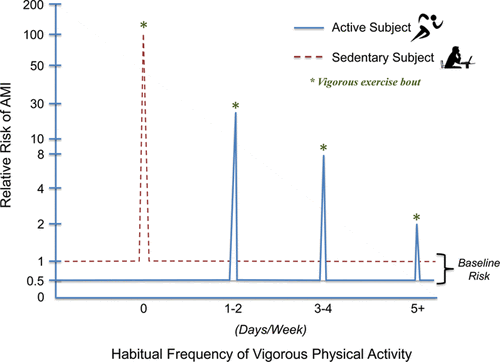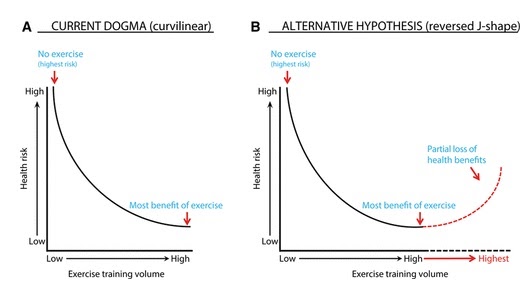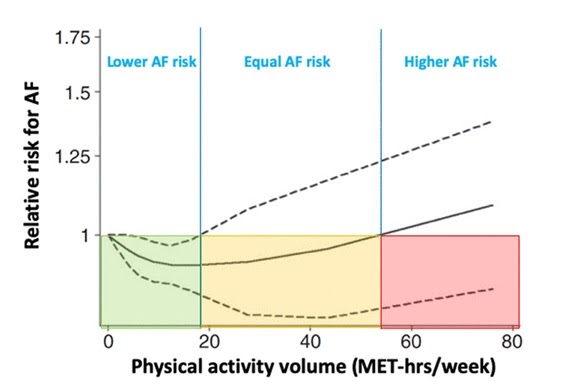

Athletes often over-rely on one type of training over others to maximize performance. It makes more sense for a marathon runner to focus on endurance running rather than lifting weights. This is often emulated by non-athletes who take them as models for health and fitness. But what if our goal is not to maximize performance but to maximize general health? What is the best exercise strategy if our goal is optimal longevity?
Sometimes, too much emphasis on one aspect of exercise can be harmful. For example, high-volume, high-intensity training can in some people lead to maladaptations in the heart muscle. In some cases can cause irregularities in heart rhythm and even heart attacks. As we will see below, it’s about striking the right balance.
Most people are not endurance athletes pushing themselves to the limit. But if these issues can happen to professional athletes, can lower thresholds of activity have similar negative effects in regular people? The answer is yes.
Although high intensity activity appears to be better than moderate intensity activity in improving some aspects of cardiac fitness, this comes at a cost. High intensity exercise can also have a higher risk of eliciting harmful changes. Here’s where it becomes interesting, the harmful effects of high intensity exercise are proportional to our baseline level of fitness, or more technically, our functional capacity.
Imagine a marathon runner doing a 10k run. Her heart workload could be similar to the workload required from someone like Homer Simpson’s heart on a walk to the Kwik-E-Mart around the corner. This is especially true with age. The figure below is from a study showing the risk of heart attacks or acute myocardial infarction (AMI) in active versus sedentary people. The less you regularly exercise the more likely you are to suffer from a heart attack after a bout of vigorous exercise.

For people who are at risk (older, sedentary or have established heart disease) there seems to be a reverse J-curve relationship between physical activity and health benefits. Meaning that health benefits increase with more physical activity, but only to a certain extent. After this, the relationship levels-off and can even start to get worse.

Atrial fibrillation (AF) is when electrical activity of the heart becomes chaotic and irregular. It is the most common electrical heart rhythm abnormality seen in adults. The figure below is from a study illustrating the risk of AF in relation to physical activity. It clearly shows an increase in AF in higher activity levels. The study graded physical activity levels in metabolic equivalents (MET) hours per week. This may be caused in part by the different pace at which different areas of the heart respond to vigorous exercise causing an imbalance in electrical conduction.

MET is a measure of energy expenditure. To understand this more, here are a few references of common activities and their corresponding METs:
In his book Range, David Epstein argues that athletes are better off improving their range of skills and being generalists at a range of skills before specializing and excelling in one single skill.
But when it comes to general health and longevity, it is all about range. Aim to be an average runner, weight lifter, yoga practitioner instead of being exceptionally good at one over the others.
https://www.ahajournals.org/doi/10.1161/CIRCULATIONAHA.118.037615
https://www.ahajournals.org/doi/10.1161/CIR.0000000000000749
https://www.ahajournals.org/doi/10.1161/CIRCULATIONAHA.118.037615.
https://www.ahajournals.org/doi/10.1161/circulationaha.106.675041
https://www.topendsports.com/weight-loss/energy-met.htm
https://www.frontiersin.org/articles/10.3389/fmed.2017.00244/full